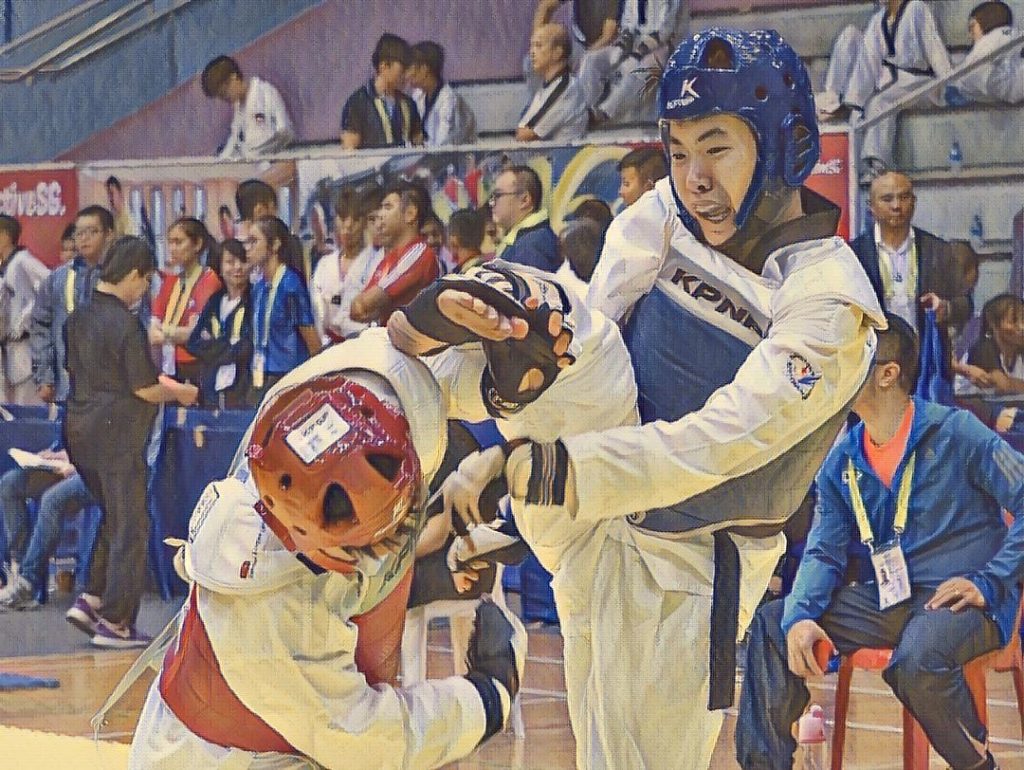
Kibon Dongjak (기본 동작 / 基本动作 / Basic Movement)
Fundamentals of Taekwondo, constituting the bases of the whole series of taekwondo techniques. It is an intention action to move the body as well as the hand and feet for offense and defense activities. In order to be proficient in taekwondo, it is important for one to first master the basic movements.
Poomsae (품새 / 品勢 / Pattern)
Poomsae is a set of systematic series of movements, which incorporate the idea of attacking and defensive techniques against imaginary opponents. It can be considered as a form of choreography that captures the essence of Taekwondo.
Poomsae practice helps in the development of rhythm, balance, coordination, endurance, patience, muscles, discipline and proper breath control. It is also a convenient and effective form of taekwondo training for all ages, gender and physical abilities.


Kyorugi (겨루기 / Sparring)
Two opponent exchanging techniques with active movements and poses, that include a mirage of foot skills. It enables practitioners to build and maintain a strong body through vigorous muscle exercise and also develop confidence, courage, self-reliance, quick thinking and respect for one’s fellow men. The outstanding feature of sparring is the provision of a practical experience for practitioners to stand alone and face a series of difficult problems that call a split second decisions.
In Kyorugi competition, it is governed by a set of rules and regulations designed by the World Taekwondo. The aim is to eliminate injurious techniques. Similarly, the safety aspect is further enforced by the mandatory use of head gear, body protector, hand glove, groin guard, mouth guard, shin guards as well as forearm guards.
Kyukpa (격파 / Breaking)
Spectacular feats like the breaking of a stack of thirty roofing tiles with the fore fist, the splitting of four pieces of thick board with an aerial kick or the smashing of a piece of tiles placed eight to ten feet above the ground with the feet. Such fantastic and flamboyant displays are necessary to show the dynamic power, the flexibility and prolific nature of Taekwondo. The practice of breaking helps to built confidence, courage, discipline and patience.


Hoshinsul (호신술 / 自卫艺术 / Self-Defense)
Special techniques which involve the application of all taekwondo techniques for real combat situations. It is a skill used to control the enemy by using defensive and offensive techniques to protect oneself. The practice of self-defence develops confidence, patience and one’s instincts.
Taekwon Chejo (태권체조 /跆拳道体操 / Taekwondo Gymnastic)
It is also known as Taekwondo Dance. It is a combination of Taekwondo basics, aerobics along with dance movements paired with music. It is a fun way of staying fit. It also provides a mode for developing character and mental strength.
Taekwon Chejo is a beautifully choreographed rhythmic movement which draws the attention many spectators and is well commented.
